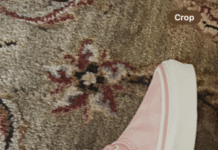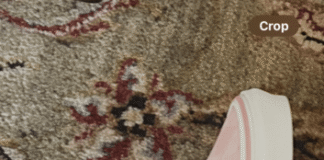
Come jump onto the lap of Mr Jon Pyzel and let’s jam on the complexity of design and how you should approach your new board (warily!)…
I’ve learned by now that unless a surfboard conforms to a set of very narrow, and specific, strictures, I’m screwed. It’s gotta be five ten or six-o, wider than the norm but thinner than recommended, almost no entry rocker, a dirty big straight section through the guts, and a pretty wild kick in the tail.
Outline-wise, I like curves. I get my speed from the rocker.
If I get a board from a new shaper and he deviates from the formula, I’ll surf it on one wave, maybe two, then throw a For Sale sign on it. It’s not that I won’t try, I just don’t…know…what to do.
Sweet spots are sweet if you can find ‘em. If you can’t, surfing becomes tedious, difficult, impossible.
Which is why I lit up Jon Pyzel, John John Florence’s shaper since the champ was five. I wanted a shaper’s angle on how we should approach different boards purely on technique. It’s true that kids should come with an instructional manual. Surfboards ain’t any different.
Here’s how it would work in my perfect world.
You’d buy your model, Medina, Rad Ripper, Ghost, whatever it is, and you get a square of paper, folded six times, that clearly states in diagrams and words where the sweet spot is, how you should apply your stance (is it a fixed-stance sorta board, do you need to roam up and down?) and where the board can and can’t go.
For example, is it a straight-up-into-the-lip sorta shape or a nurse-your-bottom-turn-but-tons-of-down-the-line speed sled?
You’d read, you’d ride and adjust your game accordingly to the manual.
I got more questions, theories for Jon, too.
Let’s clear up a few mysteries.
I’m going to posit something. We all lose our minds over volume but I believe a forgiving rocker can solve a multitude of evils in a board. Tell me your opinion.
Pyzel: Volume is so hot right now! People are getting volume obsessed and overlooking the other aspects of design that make a board less or more user friendly. Yeah, sure, added volume (read floatation) can make a high-performance design more user friendly but as you theorise bottom rocker plays an essential role as well. A flatter rocker equals a faster board while surfing and paddling and is your best friend in average-to-below-average surf (most peoples’ day to day).
And coming from the other angle, a beautiful surfboard (perfect outline, foil, bottom curve, foil etc) can be unrideable to a certain surfer if the rocker is too high-performance.
Pyzel: Unrideable is a strong term but I agree that the lower-level surfer could be losing out on too refined a board. Average drivers don’t drive F-1 race cars to the market, so why would an average surfer choose the F-1 version of a surfboard? Here volume can help. If the surfer is a little better than average, surfing in good waves and trying hard to improve, a bit less rocker (especially up front) and a fuller outline and foil will give you a huge advantage and turn struggle into joy. I can’t tell you how often I paddle by some guy on a “Pro” type board who is not having any fun. I wish I could just hand them the board they need and change their whole way of looking at surfing.
Now, I want our readers to up their ability. I want ‘em better after this interview. Tell me. How do you ride a high-performance surfboard, a JJ special? And don’t just say y’gotta do turns. Give me specifics, Jon, I know you got the key…
Pyzel: You can have the same characteristics of a pro-level surfboard, sensitivity, carveabilty, quick response and liveliness, but this brings us back to volume. Everyone can ride the same designs that I am making for John John, but they need to super-size up a bit. Add some width and thickness (how you adjust volume) and you are gonna have a board that paddles better and carries speed easier.
It ain’t as easy as that. God I wish it was.
Pyzel: Of course. And then you have to put in the effort, work on wave selection, wave positioning, keeping the board in the power zone, keeping your weight in the right place, centred, not pushing too much on your front foot and bogging. Yeah, it’s harder but the rewards can be huge too.
Now let’s talk stance. Where the hell do your feet (going fast, doing turns) have to be on…
a.) A board with a continuous rocker, fair bit of a nose and tail kick.
Pyzel: Centred to back-foot weighted is the best call. Keeping your speed up and pivoting off the tail through turns.
b.) A board with a three-stage rocker, not much nose or tail kick
Pyzel: This type of board allows for a lot of movement and has a large sweet spot so you don’t have to overthink it. Weight forward for speed, step back onto the tail to turn. Just the basics.
c.) A goddamn super-curved high-performance surfboard…
Pyzel: If I have to tell you where to put your feet, you shouldn’t be riding this board.
The fabulous Terry Fitz famously said, build your style around your surfboard, not the other way around, unless you rip. What do you think?
Pyzel: That is rad! He’s right. If you’re riding a board that is good for you, it’s gonna lead you in the right direction and help you improve. Maybe the best thing you can do is to really take a look at how your board is working for you, paddling and surfing-wise, and see if you can’t imagine something better. Maybe a board that would help improve the chinks in your armour. Are you struggling to catch waves? Do you have trouble keeping speed and making sections? Can you wrap through a smooth cutback without digging rail? Do you want to smash the lip harder and more vert? These are things that a surfboard design can help you with. Don’t keep riding that piece of shit your friend left in your garage two years ago! Goddamn!
Are the old beginner, intermediate, advanced surfer categories outdated? I know intermediate surfers who can rotate, advanced surfers who throw their boards away? Do you think there are better, and more specific, categories? Front-foot, former skater, back-foot-learned-to-surf-in-the-nineties kinda guy?
Pyzel: Surfing is a rainbow of styles, abilities, skill sets and desires. I’m the same as you. I see kooks land airs and rippers doing old-school cutbacks to the beach. There is merit to the beginner, intermediate, advanced categories, but who really even cares? Go surf. Do what feels good. Try to have some style when you do it. Style is always in style.
Average guy, wants to be front foot, but mostly isn’t. Surfs terrible beachbreaks eleven months of the year, three days when it’s six foot and goes to Indo once a year. He’s five-ten, 170 pounds. Describe his quiver.
Pyzel: The Ghost 6’1” x 19.63” x 2.63” x 31.70L round pin, for his Indo trips and when his beachie has a decent bank. He’s gonna get in easy and can push it into the two-times overhead range in clean conditions. It’ll fly, turn on a dime and hold as hard as he can push.
Voyager 1 6’0” x 19.00” x 2.44” x 28.80L squash, for the good days at home and the fun-sized days in Indo. High-performace with a touch less entry rocker to keep it flowing. This is JJF’s new shorty he debuted at Snapper.
Stubby Bastard 5’11” x 19.50” x 2.44” x 29.30L squash for your every day board. The volume and width pushed up front, relaxed entry rocker for speed and paddle power, plenty of tail rocker to keep it loose and snappy. High performance with hidden help.
Sure Thing 5’9” x 19.63” x 2.44” x 30.10L double-bump squash with baby channels. The Electralite EPS construction for a great strength-weight ratio and lively feel. For weaker, slower waves or just to liven up a normal session. Take it to Indo and get loose or make the most out of blown slop at home.
Tell me a secret about surfing technique you’ve learned from your phenomenal team rider.
Pyzel: Never claim





